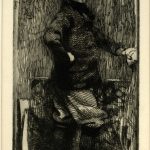The Belle Époque or La Belle Époque (French: [bɛlepɔk]; French for “Beautiful Epoch”) was a period of French and Western history. It is conventionally dated from the end of the Franco-Prussian War in 1871 to the outbreak of World War I in 1914. Occurring during the era of the French Third Republic (which began in 1870), it was a period characterised by: optimism; regional peace; economic prosperity; colonial empires; and technological, scientific, and cultural innovations. In this era of France’s cultural and artistic climate (particularly within Paris) the arts markedly flourished; with numerous masterpieces of literature, music, theatre, and visual art gaining extensive recognition.
The Belle Époque was so named in retrospect, when it began to be considered a “Golden Age” in contrast to the horrors of World War I. The Belle Époque was a period in which, according to historian R.R. Palmer: “European civilisation achieved its greatest power in global politics, and also exerted its maximum influence upon peoples outside Europe.” Reference: Wikipedia
Below are some examples of prints depicting the Belle Epoque era including a poster by Jules Cheret and a colored lithograph entitled “Le Canotage” by Pierre Bonnard and published by Ambroise Vollard.
Whole-length portrait of the artist’s eldest son; standing on chair to right, right hand on hip, head turned to face front. 1891 Etching with some drypoint(?) Print made by: Albert Besnard
PIERRE BONNARD (1867-1947) Le canotage (Roger-Marx 44; Bouvet 42) lithograph in colors, 1897, on Chine volant, signed in pencil, from the edition of 100 (there are a few proofs in black), published by Ambroise Vollard, Paris, with full margins, in very good condition, framed L. 10½ x 18 5/8 in. (266 x 471 mm.) S. 16 7/8 x 22½ in. (428 x 571 mm.)
Sold for USD 6,000 at Christie’s in 2007
JULES CHERET PALAIS DE GLACE CHAMPS ELYSEES POSTER
Framed, matted. Depiction of fashionable couple ice skating. Jules Cheret (31 May 1836 – 23 September 1932) was a French painter and lithographer who became a master of Belle Epoque poster art. He has been called the father of the modern poster. Some scratches to plexi cover.
Artist: Jules Cheret Issued: 1896 Dimensions: 28″W x 38″H x 1″D, framed Country of Origin: France
Sold for $325 at Whitley’s Auctioneers in 2019





